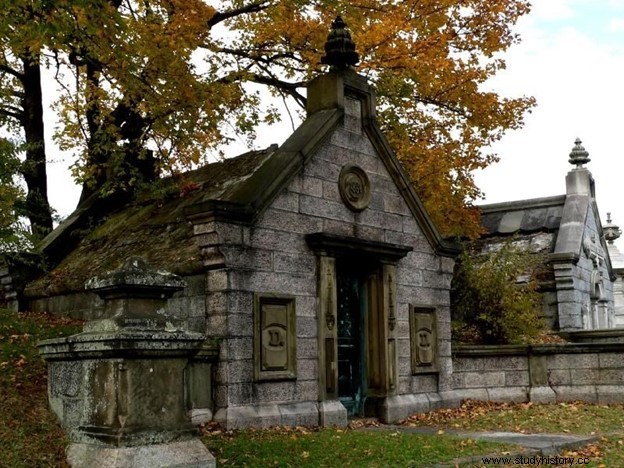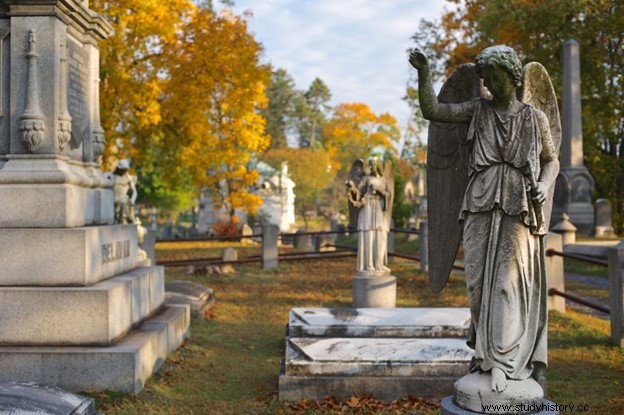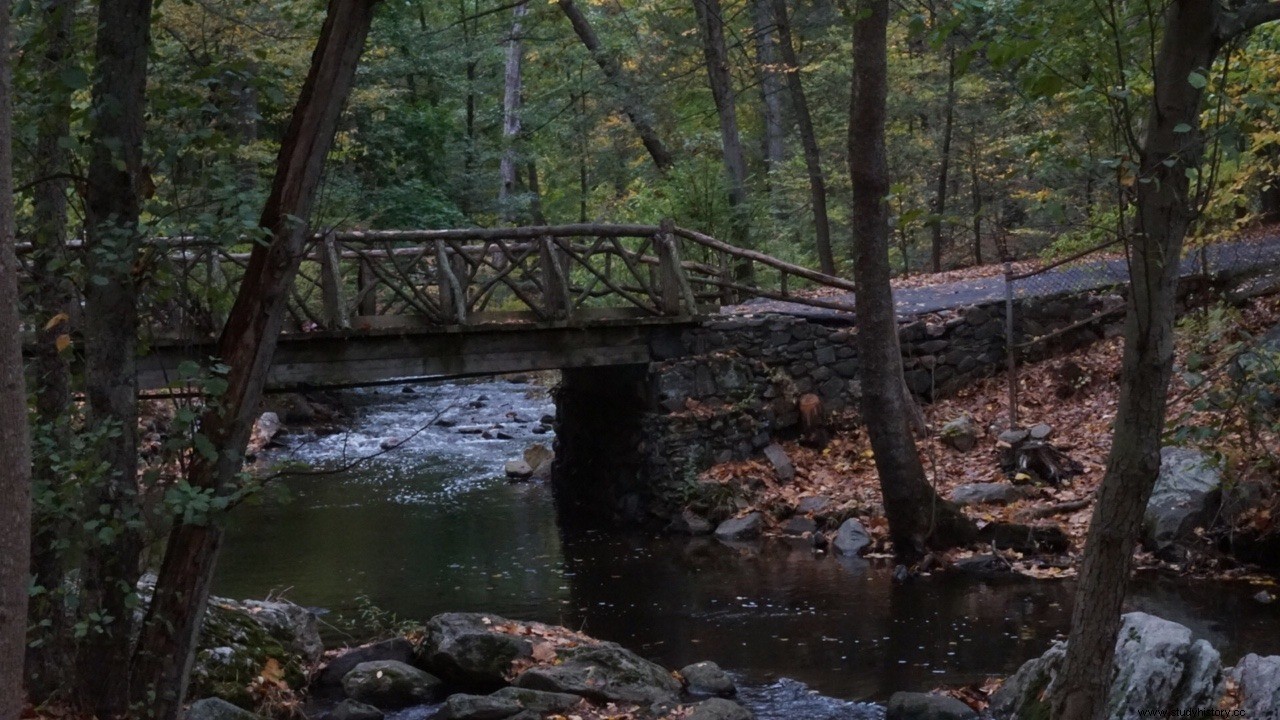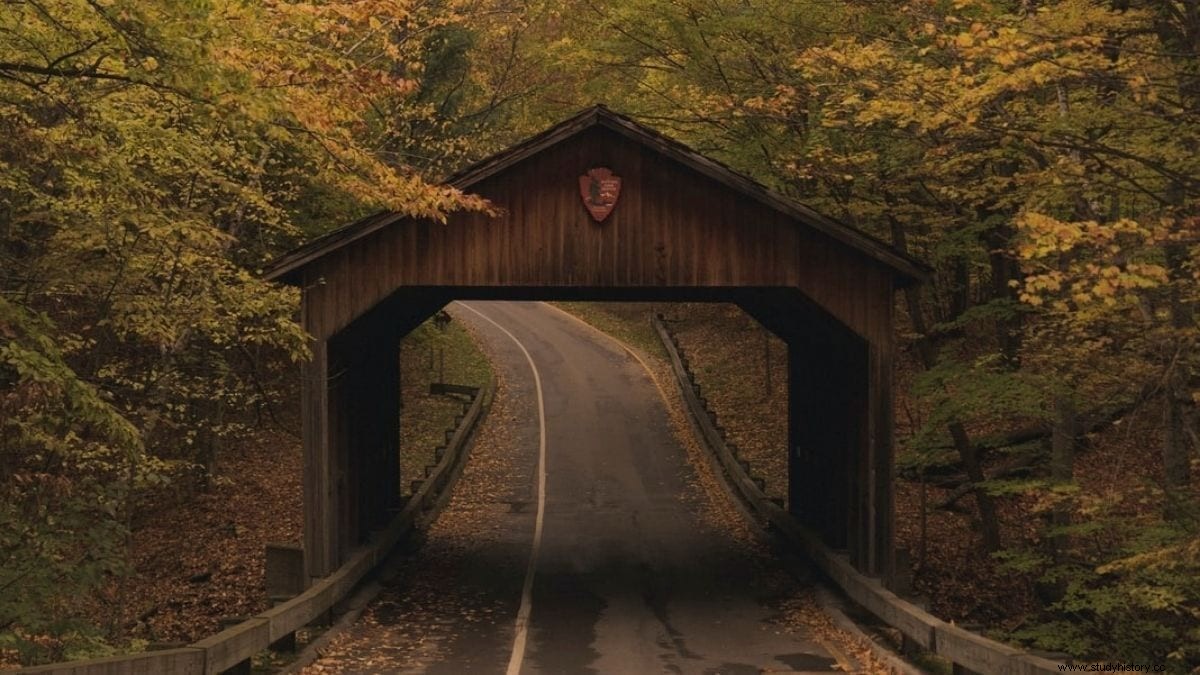Deep in the lesser known side of New York, USA is a small village full of obscure and rich history. When we cover the compelling Legend of Sleepy Hollow, there will be a greater understanding of the infamous story.
Followed by learning about the real elements that create the total lid of this historic village's eerie reputation. In other words, the infamous district comes to light!
Dark Origins in Europe

To begin with, the legend of Sleepy Hollow finds a prominent place in a former Dutch settlement in Tarrytown, New York. In this place, this well-known city becomes known for hosting a variety of haunts and shady atmospheres that affect many.
Also, the origins of the infamous story of a vengeful Headless Horseman go back to the old world. To illustrate, the American author Washington Irving was motivated to create his story while traveling abroad.
Furthermore, headless figures with horses were given a prominent place in northern European folklore. For example, characters such as the Irish "Dullahan" and Scandinavia's "The Wild Hunt" played a major role in the composition of actions.
While these mythological characters are known for their deviant and threatening nature, there are a few more that possibly inspired them. In the German chronicles of Szprotawa, author JG Kreis covers paranoia events when they go out after dawn.
For this reason, the appearance of a headless riding figure becomes prominent in the chronicle. In summary, these stories are believed to motivate Washington Irving to make his compelling story.
The Mind Behind Sleepy Hollow

Then Washington Irving became known and recognized for his creation of Sleepy Hollow. Interestingly, he wrote his literary play while living in Birmingham, England.
Traveling through Europe and discovering old-fashioned folklore actually helped create the perfect monster for his story. Irving's story was originally featured in a collection of thirty-four short stories entitled "The Sketch Book of Geoffrey Crayon, Ghent".
In addition, this collection was officially released to the public in 1819-20, where Irving's story achieves immediate success. What makes his story so popular is that it contains elements that are related to the past.
For example, the headless rider is derived from a Hessian soldier background who was beheaded by a cannon in battle. Apart from this, the events surrounding the death of the Hessian soldier took place around the holiday of Halloween.
This actually created a cultural and appreciative attitude to the story as many people use this figure as a symbol. In short, Irving's story results in delivering a lasting impact on the small American town's reputation.
American Revolutionary War Influence

Furthermore, Legend of Sleepy Hollow reflects much of America's colonial history. While some elements are completely fictional or altered to fit the story, it relates back to the original purpose.
In history, the city becomes superstitious for the reason of believing that they are under a curse. This originates from the first settlement of the Dutch who took the land from Indians.
As a result of being expelled, the belief in a wizard boss who puts a hex on the city increases in popularity. Nevertheless, this place becomes central to hosting various inexplicable and obscure events related to eerie observations, noise and visions.
An example of a story related to the history of America is the headless rider who comes from a Hessian soldier background. To put it another way, this type of soldier was recognized as auxiliary German soldiers who fought in the American Revolutionary War.
While earning the British crown, many lost their lives by beheading with cannon explosions. In short, the revolutionary war and the country's history play a major role in Sleepy Hollow's history.
Additional War Influence in Sleepy Hollow
Moreover, colonial settlements and displacements that occurred in the Dutch colony of Sleepy Hollow, followed more motivating effects. In Washington Irving's history, the headless rider is believed to be a vengeful revelation of a fallen victim of war.
With that said, the city is gaining a significant reputation for its haunting past that does not seem ready to leave. Another protagonist who shapes the mood of the story is Ichabod Crane.
Although he comes from Connecticut, he travels to the superstitious city and makes a positive lasting impression on everyone. Although things may seem stable and hopeful for a second, Ichabod gets into trouble while immersing himself in superstition.
Irving's novel presents Ichabod as a firm believer in the occult when he finds satisfaction in hearing stories about ghosts. This character's inspiration came from a real character of the same name in Irving's life.
Other characters such as Katrina Van Tassel also come from people the author spent time with. All in all, Washing Irving's goal was to create a compelling story that blended real elements into his literary play.
Dutch Colonial America

Equally important, the village of Sleepy Hollow in New York was originally settled in 1640 by the Dutch. The founder, Adriaen van der Donck, was a patron or landowner who made the city what it is today.
In 1672, Frederick Philipse began composing official parts of the country, eventually building The Manor of Phillipsburg. As a result of these actions, he became the region's first lord. Interestingly, you can find an upper mill and freight depot in today's Sleepy Hollow next to the mansion. These places are important in the real history of the city because Irving's novel contains these places as the mills in film.
For the most part, the audience can see the strong colonial Dutch influence on architecture / culture in history. For example, names like Katrina Van Tassel, Brom Van Brunt and Peter Van Garret highlight the previous culture that dominated.
All in all, Washington Irving's history mimics historical elegance, representation, and fear of the unknown.
American Literature and Romance

Aside from the vast old world and colonial influences that create The Legend of Sleepy Hollow, comes its literary stance. First and foremost, Washington Irving's history becomes one of the most studied, compiled, and interpreted works.
With the addition of Rip Van Winkle, both stories often find themselves together in modern representations. Although they may be counterparts to the same universe, they both correlate too easily to intertwine with each other's plots.
Without a doubt, this Headless Horseman story is understood to be a good example when it comes to representing early American literature / history. One can see these illustrations in the regional culture with Dutch colonial presence, and themes about the supernatural that become common.
In addition, the theme of a homogeneous society also serves a large part as most of the nineteenth-century American developed identities after the war. Apart from these topics, romance adds a lighter and more inviting element to the scary story.
Essentially, this unique legend mixes different content in a beautifully fashionable way.
A horror icon

In addition to the themes presented in The Legend of Sleepy Hollow, comes the official recognition it earns in modern society. Washington Irving's book has proven to withstand the test of time, making his story a truly established success.
To illustrate, there are and still are many adaptations that are presented to new audiences in a timely manner. One of the most famous interpretations of modern times is Tim Burton's 1999 version of the story.
Nevertheless, this adaptation is praised for both being close to faith in Irving's history and presenting engaging images / mood. While this presentation is aimed at an adult audience, a child-friendly presentation goes to the Disney form from 1949.
The latest example of a modern interpretation of this beloved story goes to a television adaptation in 1980. This title is recognized because a producer was nominated for an Emmy Award for his writing performance.
To sum up, Sleepy Hollow has really become a horror icon that transcends time.
Sleepy Hollow in other media

Along with exciting examples that mimic and preserve the memory of the book's success, there are further examples in other media. One of the lesser known productions of this compelling story can be found in a theatricalization from 2009.
This performance turned out to be unique when it came in the form of a musical. It also took place at Webster State University in Ogden, Utah, where it later received a theater festival award.
On the other hand, there is also an NBC radio adaptation of this story that took place in 1946. This performance featured voice performances by famous actors such as Ronald Colman. Interestingly, this event came about as a request from actor Walter Huston.
The latest example of adaptations comes in the form of music. Furthermore, it is a composed track of Eastwood Lane dating to 1913 that created the play as a tribute to history.
As shown above, Washington Irving's hard work pays off as his story is celebrated in many forms of expression.
The legacy of culture and fear

While Washington Irving is no longer with us, his cooling yet captivating tale implements an eternal impression in Sleepy Hollow. An example is the city's local high school sports team that uses its official logo as "The Horsemen".
Another is a large statue depicting the menacing villain chasing Ichabod Crane on Route 9 in the village. In addition, there is also the celebration of "Legend Weekend" which takes place at Philipsburg Manor House before Halloween in the city.
Although many events celebrate the legacy of Irving's success in writing, the fear remains. In fact, this seemingly quiet city will always have a special place to host supernatural events from haunts, superstitions and more.
Besides, the fear of the unknown can persist, but it does not stop residents or visitors from having fun. Overall, this city becomes central to the mysterious beauty and invisible forces of nature.
Last Thoughts on Washington Irving's History

Finally, the last reflection of Washington Irving's success comes in his story. What makes The Legend of Sleepy Hollow so compelling is the fact of its creation process.
For example, the original story consisted of only having twenty-four pages! Apart from this, it never had its solo print when it was published in a collection of mixed stories.
This definitely creates a remarkable status for the story because it can be rediscovered in this modern day. Apart from this, the figure of the headless rider has a great influence on the modern culture of horror.
Undoubtedly, there is no Halloween in Sleepy Hollow without a ghostly equestrian appearance to entertain, intimidate and persuade. Overall, Irving succeeds in capturing the imagination and attention of the audience.
Significance for the legend of Sleepy Hollow

In conclusion, from old-fashioned influence, colonial American history and love of horror, the legend of Sleepy Hollow thrives! This unique presentation of history becomes central to cultural representation due to its lasting influence on the city.
In addition, darker elements in the literature are a worthy addition to the example, as many people appreciate diverse storytelling. With the arrival of every day ending in darkness, comes a world full of mysterious uncertainty that opens up many worlds.
In essence, obscurity serves as the next chapter to unfold the greatest mysteries of mankind. Followed by giving a lending hand to those seeking truth in the midst of the gloom of waking life barriers.
Works cited:
Washington Irving | Biography, books, Sleepy Hollow, short stories and facts | Britannica
The sketchbook of Geoffrey Crayon, Ghent. - Wikipedia
"Rip Van Winkle" Summary and Analysis | LitCharts
Tarrytown, New York - Wikipedia
Headless rider | Myths and Folklore Wiki | Fandom
